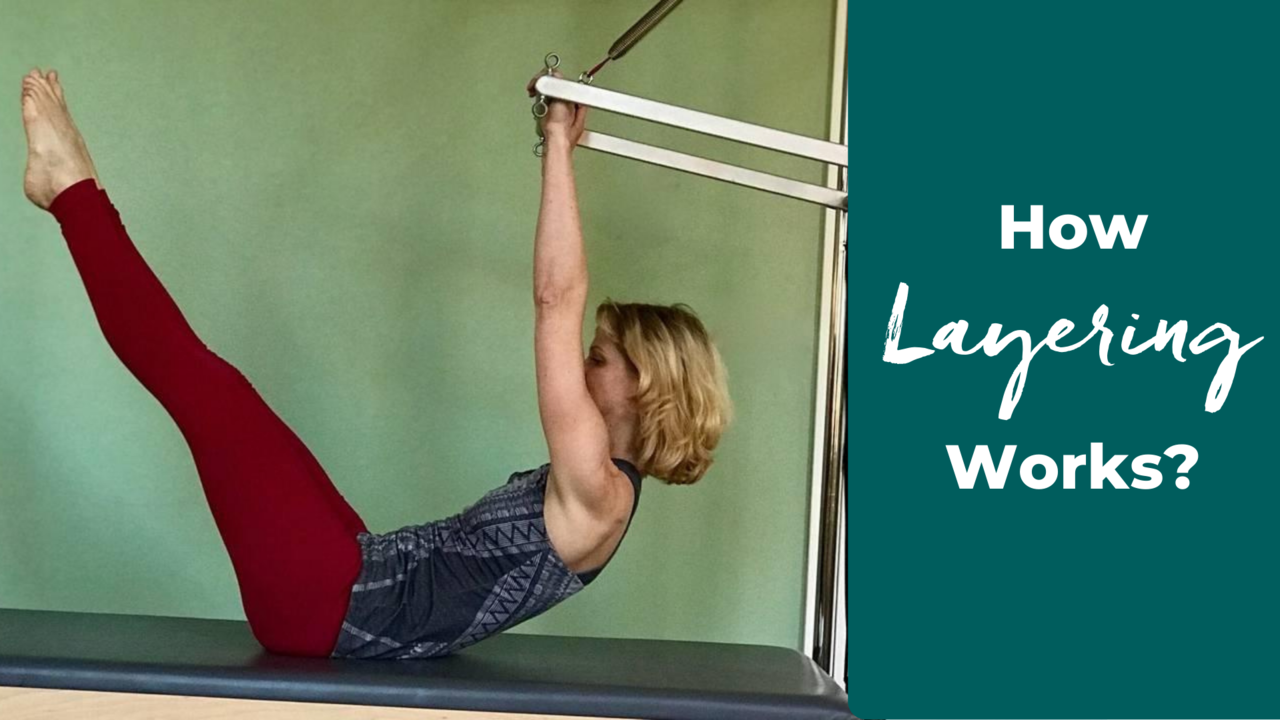
How Layering Works to Progress Students Safely
Jan 02, 2019Pilates has so much to offer. If you’re ready to go deeper and explore each exercise in more and more depth, you can keep an exercise interesting for years.
I’ll explain how I layer one detail onto another, to progressively challenge my students while keeping them safe. I’ll use the example of Teaser Prep (aka Roll Up with Push Through Bar) on the Trapeze Table:
- The first time I teach the exercise, I teach it with bent knees which allows the pelvis to tilt more easily. All I ask the student is to roll up into a seated position while pushing the bar up. I usually tell them where to direct their gaze to keep the cervical spine and neck muscle safe as they learn the exercise.
- Once they get that, I might add the breathing pattern: INHALE to prepare, EXHALE to roll up, INHALE at the top, and EXHALE on the way down.
- Once they get that, I might place my hand on their spine when they are in the seated position and ask them to focus on placing one vertebra at a time onto the table as they roll down.
- Then I tell them to try the same thing on the way up, which can be more difficult.
- The next challenge will be to keep the neck relaxed.
- If they bend their arms then we practice keeping the arms straight throughout, which will require more core strength (since the arms can’t help anymore).
- Then I’ll add the external rotation of the upper arms. “Roll your biceps forward and your triceps back.
- THEN - and only then - I further challenge them to straighten their legs on the mat. This requires more hip flexor length.
- The next challenge will be to lift the legs into Table Top. This requires the ability of the hip flexors to lengthen eccentrically. That’s hard!
- From there, they could extend their legs into a 45 degree diagonal.
- Then they can work on Teaser 2 (lowering and lifting the legs at the top).
- Then they could attempt Teaser 3 (lifting the legs at the same time as they roll up.) Note: if this seems easier than what they did before, then check their spine articulation. Most likely they are now recruiting their hip flexors to do the movement instead of their abdominals. Hip flexor action will pull the lumbar spine forward, which results in a reduced ability to segmentally flex the spine.
- I can think of a rotation variation but since there is soooo much to keep track of and a whole lot to get right, not a lot of my student get to practice it. It’s Contrology after all. Remember that anything in this list that feels easier than the variation above is most likely due to incorrect form. When the body(mind) is confused, it will go back to its old patterns.
How fast do I move through this list? That totally depends! Some students might get there in a few months (young, fit, athletic). Others might never get to 13. Who cares! They make a lot of progress along the way.
Related: The Cueing Cure: Dramatically Improve Your Verbal Cueing in 30-Days
Hat tip to Katrina Hawley from The Pilates Studio in Hadley, MA for reminding me that “The first time your student does an exercise, it can be horrible. The second time it can still be terrible. You can’t fix everything in one class. Keep them safe, make sure they have a good time and don’t overwhelm them with cues.” My life got so much easier after receiving this excellent advice.

Get support with your day-to-day teaching challenges
Ready to Teach Pilates with Clarity and Confidence?
Sign up to receive my weekly email newsletter. It's jam-packed with Pilates articles, videos, exercise tutorials and teaching tips.
Only super valuable stuff here. No spam ever. Unsubscribe any time.












